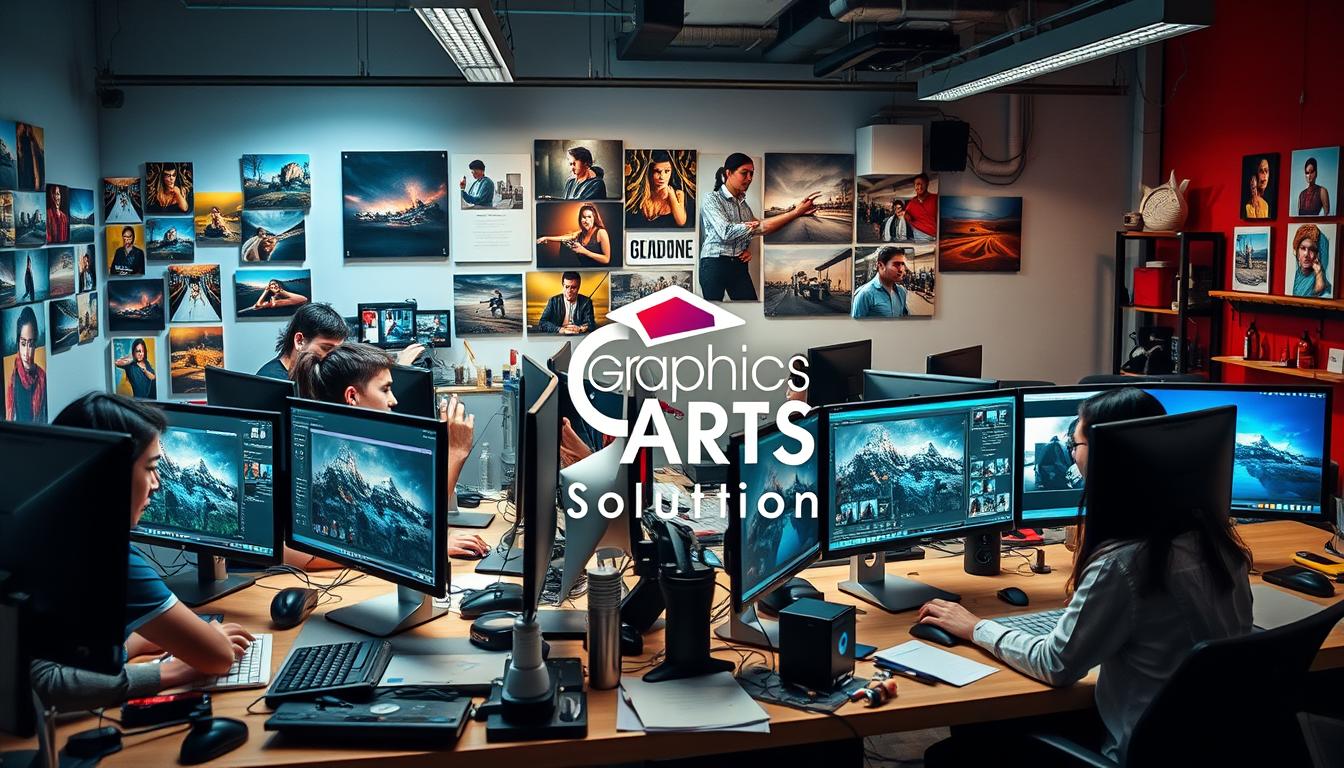As a pro in the field, I’ve seen outsourcing photo editing change the game. It helps photographers and businesses work better. But, it’s not without its problems.
Outsourcing can save time and make work better, but common errors in outsourcing can be a letdown. In this article, we’ll look at the most common outsourcing mistakes. We’ll also share tips on how to steer clear of them.
Growing trend of outsourcing photo editing
More people want high-quality images. So, they’re turning to outside help for photo editing. This way, they save time and work better.
Why Photographers Are Increasingly Outsourcing Their Editing
Photographers outsource to save time. They can then focus on taking pictures. Outsourcing means they get their work done faster, which is key today.
Benefits of Outsourcing When Done Correctly
Outsourcing photo editing has many good points. For example:
- Images look better
- It’s cheaper than doing it themselves
- Everyone works more efficiently
It also lets businesses grow without hiring more people. They don’t need to spend on training.
Types of Photo Editing Commonly Outsourced
Many types of photo editing are sent out. These include:
- Retouching: fixing skin and faces
- Color correction: making colors right
- Image manipulation: changing pictures
Knowing the benefits and types helps businesses choose the right partner. This way, they meet their photo editing needs.
Not defining your editing style and requirements
Photographers often forget to define their editing style and needs. This mistake can cause problems. It leads to mixed results and wastes time and money.
Importance of a Clear Style Guide
A clear style guide is key. It helps your editing partner get your vision. It should cover color, retouching, and how to format files.
Elements to Include in Your Style Guide
- Color profiles for consistent colors
- Retouching standards for quality
- Formatting for how to deliver files
Examples and Reference Images
Showing examples and reference images helps a lot. It shows your editing partner what you like. This helps them get your style right.
| Element | Description | Example |
|---|---|---|
| Color Profile | Ensures colors are the same | sRGB for web use |
| Retouching Standards | What level of touch-up to do | Basic, Advanced, or Premium |
| Formatting Requirements | How to name and format files | JPEG, TIFF, or PSD with client name and date |
How to Effectively Communicate Your Vision
To share your vision well, be clear and direct. Use examples and images to show what you mean.
Balancing Specificity with Creative Freedom
It’s important to be specific about what you want. But also, let your editor have some freedom. This way, they can do great work that meets your needs.
Choosing the wrong outsourcing partner
Finding the right photo editing service is key. The wrong choice can mean bad results, missed deadlines, and more money spent.
Red Flags to Watch for When Selecting a Photo Editing Service
Look out for these red flags when picking a photo editing service:
- Poor communication: If they don’t talk clearly or often, it can cause mistakes.
- Lack of transparency: Be careful if they don’t share how they work, what they charge, or when they’ll finish.
- Inadequate portfolio: A good service should show lots of examples of their work.
Questions to Ask Your Editing Partner
Make sure you’re choosing the right one by asking these questions:
- What photo editing experience do you have, and what projects have you done?
- Can you show me examples of your work?
- How do you check your work for quality and keep it consistent?
Evaluating Portfolios and Previous Work
Check their portfolio for:
- Relevance: Do they know how to edit your kind of photos?
- Quality: Are their edits good and consistent?
- Style: Can they match your style or change it if you want?
Importance of Industry-Specific Experience
Each industry has its own photo editing needs. For example:
Product Photography Specialists
Product photos need to be perfect, with details and features highlighted.
Real Estate Photo Editing Requirements
Real estate photos should look good to attract buyers. They might need better lighting, color, and view.
Choosing someone with experience in your field means your photos will look great and meet your needs.
Skipping the test project phase
Many people miss an important step when they outsource photo editing. This step is called the test project phase. It’s key to check the quality, how fast they work, and how well you can talk to them.
Why a trial run is essential
A trial run helps you see if your partner can do the job. It shows if they pay attention to details and understand your style. This way, you can make sure your project is safe.
How to structure an effective test project
Start with a small set of images that show what you usually need. Include different lighting and complex edits. Give clear instructions on what you want.

Evaluating test results objectively
When you look at the test results, be fair and focus on quality and accuracy. See if they did what you asked and if it looks good. This helps find problems before you do a big project.
Some important things to check include:
- Attention to detail
- Consistency in editing style
- Timeliness of delivery
- Quality of communication
Doing a good test project phase means you’ll have a great experience and get great results.
Critical outsourcing mistake: poor communication
Poor communication is a big mistake in outsourcing photo editing. It can cause misunderstandings and delays. It’s key to talk well to make sure your needs are met and the work is top-notch.
Setting Up Effective Communication Channels
To avoid bad communication, you need to set up effective communication channels. This means regular talks, emails, or using project management tools. A clear way to talk helps everyone understand and solve problems fast.
Establishing Feedback Protocols
It’s also important to have feedback protocols. This means having a way to give and get feedback. It helps improve the editing work and get better results.
Overcoming Language and Cultural Barriers
Working with people from other countries means you have to get past language and cultural barriers. Use simple words, avoid hard terms, and respect cultural differences. This way, your needs are clear, and the work is what you want.
Using Visual References to Clarify Expectations
Visual references are great for making things clear. Show examples or reference images to help the other side understand your vision. It’s very helpful when working with people from other countries or with complex tasks.
By fixing poor communication and setting up good ways to talk, you can have a great outsourcing partnership. And you’ll get high-quality work.
Neglecting to check for security and confidentiality measures
When you outsource photo editing, it’s key to check if your partner has strong security. This keeps your business and client data safe.
Understanding Data Protection Requirements
Know the data protection rules your business must follow, like GDPR and HIPAA. It’s important your editing partner follows these rules.
Working with sensitive images or client data? Make sure your editing service keeps things private. They should use secure file transfer protocols like encrypted uploads and downloads.
Secure File Transfer Protocols
Secure file transfer is key to keeping your data safe. Look for editing services that use encrypted file transfers.
| Security Feature | Description | Importance Level |
|---|---|---|
| Encrypted File Transfer | Files are encrypted during transfer | High |
| Secure Servers | Data is stored on secure servers | High |
| Access Controls | Limited access to authorized personnel | Medium |
Contractual Protections You Should Have in Place
Having contractual protections like NDAs adds extra security for your data.
By making sure your editing partner has good security, you can safely outsource your photo editing.
Unrealistic expectations about turnaround time
Many people make a big mistake when they outsource photo editing. They think it will take less time than it really does. It’s important to set realistic deadlines. This means knowing how long it will take based on the editing task and the partner’s work load.
When you plan your work, think about a few things:
- How hard the editing tasks are
- How much work your partner can do
- When it’s busy and you might need to rush
Setting Reasonable Deadlines
To set good deadlines, you need to know how much work it is. This means:
| Task Complexity | Average Time Required |
|---|---|
| Basic Editing | 1-2 hours per image |
| Advanced Editing | 2-4 hours per image |
| Complex Editing | 4+ hours per image |
Planning for Peak Seasons and Rush Orders
It’s important to plan for peak seasons and rush orders. You should add buffer time to your plan. This helps you deal with delays or more work without missing your deadlines.
Building Buffer Time into Your Workflow
Adding buffer time helps you manage your work better. This means:
- Finding parts of your work that might slow you down
- Having extra time for hard or important tasks
- Checking and changing your plan as needed
Communicating Timeline Expectations to Your Clients
Telling your clients about your timeline is key. It helps avoid confusion. Make sure to:
- Explain your plan and when things will be done
- Keep them updated on their project
- Tell them if there are any problems or delays
Overlooking the importance of file management
Good file management is key when you outsource photo editing. It makes the workflow smooth. I make sure my files are handled well to avoid delays and mix-ups.
Creating an efficient workflow for file transfers
To do this, I focus on making file transfers efficient. I pick a secure and reliable FTP or cloud service. I also set up a clear folder structure for my editing partner.
Naming conventions and organization systems
Clear naming conventions and systems are important. I use file names that tell what’s in them, like project name and date. This helps my partner know what they’re working on.

Version control and revision tracking
Having version control is key for managing image updates. I use numbers or dates in file names to track changes. This way, I always work with the latest version and can go back if needed.
Storage and backup considerations
Lastly, I think about storage and backup for my files. I keep backups in places like external hard drives and cloud services. This keeps my data safe and ensures I can keep working.
By focusing on file management, I make my outsourcing better. I cut down on mistakes and work more efficiently.
Not providing feedback for continuous improvement
Having a feedback mechanism is key for good photo editing outsourcing. It helps your editing partner get your needs right. This leads to better photos over time.
Giving Constructive Feedback
To give constructive feedback, tell what you like or dislike about the photos. For example, if the brightness is off, show what you prefer. This makes it clear to your partner.
Building a Long-Term Relationship
Having a long-term relationship with your partner is great. It makes communication better and results improve. Giving feedback often builds trust and understanding.
Implementing a Quality Control Process
It’s important to have a quality control process. This lets you spot and fix problems fast. You should check your partner’s work often and give feedback.
When and How to Escalate Issues
Knowing when and how to escalate issues is key. If a small problem keeps happening, talk about it with your partner. This stops big problems from starting.
By following these steps, you can make sure your photo editing outsourcing goes well.
Failing to calculate the true cost of outsourcing
Outsourcing photo editing costs more than just the price per image. The cost per edited image is important. But, there are other costs to think about when you outsource your photo editing.
Hidden Costs to Consider
There are hidden costs when you outsource photo editing. These include fees for file transfers, software costs, and training for your team. This training helps your team work well with the outsourcing partner.
Evaluating ROI Beyond Just the Price Per Image
When looking at the return on investment (ROI) of outsourcing, think about more than just the cost. Consider time savings, better quality, and more productivity. These can really help your business grow and make more money.
Time Savings Versus Quality Control Trade-offs
Outsourcing can save you time. But, you might need to spend time checking the quality. Finding the right balance is key to getting the most from outsourcing.
Scaling Your Outsourcing as Your Business Grows
As your business gets bigger, your outsourcing needs will change. It’s important to pick a partner that can grow with you. Also, make sure your processes can adapt to your business’s growth.
Understanding the true cost of outsourcing helps you make smart choices. This way, your business can benefit in the long run.
Conclusion: Maximizing success when outsourcing photo editing
Outsourcing photo editing can really help you work better and make your images look great. Avoiding mistakes like bad communication and too high hopes is key. This way, you can do well when you outsource photo editing.
It’s important to follow the best ways to get good results and a strong partnership. This means knowing what you want, picking the right person to work with, and talking well.
Using these tips, you can make outsourcing easy and effective. This lets you focus on your main work while experts handle the editing. This leads to great success in your projects.
FAQ
What are the most common mistakes made when outsourcing photo editing?
Common mistakes include not knowing what you want and picking the wrong partner. Skipping the test phase and not talking well are also big errors. Not checking for safety and expecting too much can also cause problems.
Ignoring how to manage files and not giving feedback are also mistakes. Not knowing the real cost of outsourcing is another big error.
How do I define my editing style and requirements when outsourcing photo editing?
Start by making a clear style guide. This should cover things like colors and how to retouch photos. Use examples and reference images to make your expectations clear.
What should I look for when selecting a photo editing service?
Look for red flags like bad communication and unclear portfolios. Ask the right questions and check their past work. Make sure they know your industry well.
Why is a test project phase important when outsourcing photo editing?
A test phase lets you see the quality, how fast they work, and how they communicate. It helps find problems before you start a big project.
How can I ensure effective communication with my outsourcing partner?
Set up regular meetings and use email or project tools. Make sure you can give feedback easily. This helps avoid misunderstandings.
What security and confidentiality measures should I look for in an outsourcing partner?
Look for strong security and privacy measures. This includes data protection and secure ways to send files. They should also have contracts that keep your info safe.
How can I manage my expectations about turnaround time when outsourcing photo editing?
Set deadlines based on the task’s complexity and your partner’s capacity. Plan for busy times and add extra time to your schedule.
What are the best practices for file management when outsourcing photo editing?
Make transferring files easy and use clear names and systems. Keep track of changes and think about where to store files.
How can I provide feedback to my outsourcing partner for continuous improvement?
Give feedback that is clear, focused, and helps them improve. Building a long-term relationship will lead to better work and communication.
How do I calculate the true cost of outsourcing photo editing?
Don’t just look at the cost per image. Consider extra costs like sending files and training. Think about how it saves time and improves quality.





